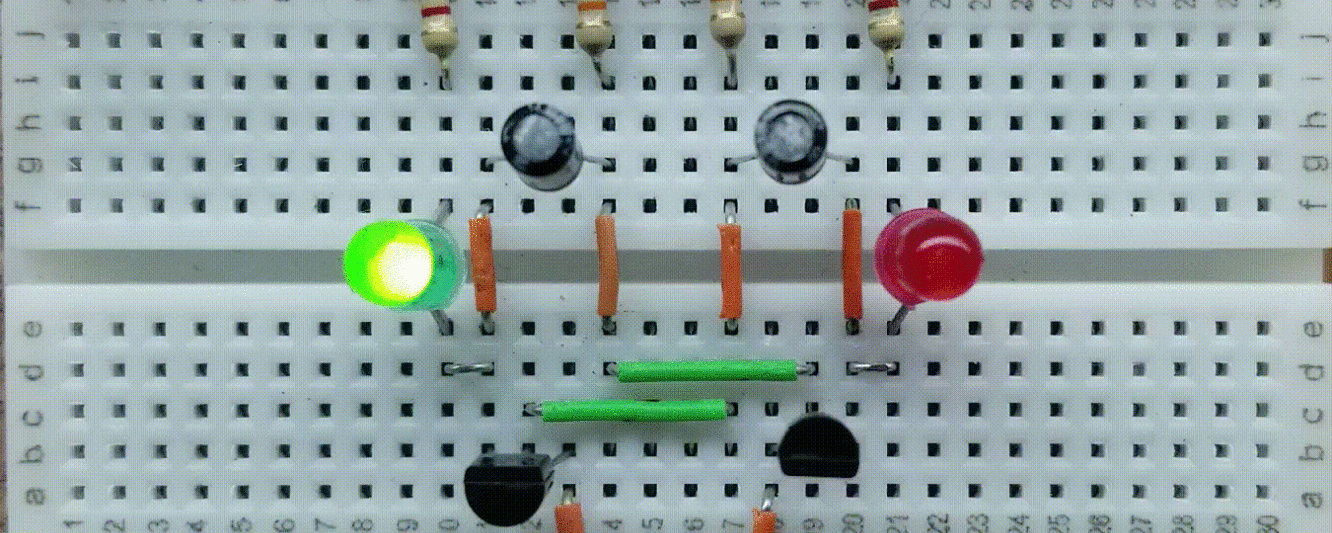Hands On Ohm’s Law Project Project Overview As with any lab project on BreadBoardCircuits.com, building the circuits are recommended, but not necessary. If you wish to just read along, you will still get a great deal of useful information out of the article. With this beginner’s project, you will learn Ohm’s Law basics and beyond – in theory and on […]
Transistorized PWM Generator
Build a Four-Transistor PWM Generator In a previous project, we designed and breadboarded a 1KHz multivibrator circuit consisting of four transistors. With a simple modification, that circuit will be able to produce a clean and adjustable Pulse Width Modulated output with a duty cycle of between 15% and 85%. This PWM Generator can easily be built on a breadboard. Before […]
Improved Astable Mulitvibrator with Clean Square Wave Output
Improving the Astable Mulitvibrator Circuit In a previous article, we built and described the operation of a classic astable mulitvibrator that used two NPN transistors and a few supporting components. It was a good basis for a multi-use oscillator, but had a major limitation in its ability as a practical circuit. By its nature, the output waveform had a rounded […]
Astable Multivibrator Circuit
The Classic Astable Multivibrator Oscillator What is a Mulitvibrator? A Multivibrator is an oscillator that consists of two amplifiers (transistors) and is cross-coupled by capacitors and resistors. What does “Astable” mean? “Astable” means “not stable. Thus an astable mulitvibrator is free-running. It spontaneously oscillates between states. It never reaches a stable (off or on) mode. This can be compared to […]
Breadboarding Safety and Best Practices
Learn, Construct, Be Safe, Have Fun BreadBoardCircuits.com is a fun way to help you learn about electronics through hands on application of theory. Through this website and video channel, you can build-along, read-along, or just watch along as we describe and construct fun and educational circuits on breadboards. Be Safe Itś always best to err on the side of safety. […]
